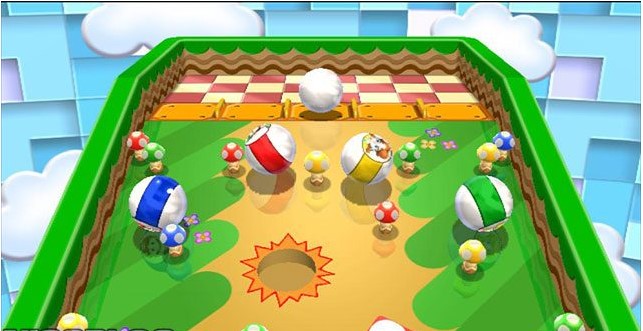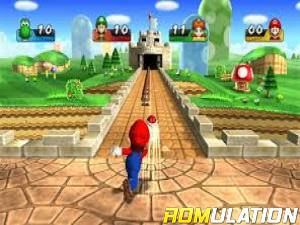

Orbs allowed players to use effective items and throw traps on different spaces, giving the game the strategic element it needed. Mario Party 6 took the changes Mario Party 5 put into place and reworked them to create a new and inventive system.
#MARIO PARTY 3 ROM ON WII SERIES#
With that said, the minigames are by far some of the greatest the series has ever seen, and this alone makes it a standout entry in the series. Losing half your Mini-Stars by a random event is never a good idea. What ultimately left this mode in shambles is the amount of luck that was forced into the gimmicks of each board.
#MARIO PARTY 3 ROM ON WII FREE#
Gone is the free roaming gameplay and star purchasing, as players now ride together in a single vehicle, all while collecting the most Mini Stars before they reach the end of the board. The ninth outing in the main series has to be the most divisive of the bunch.

The Mario Party series doesn’t need a feature that is always punishing, mandatory, and automatic on every board you play.

There’s a lot to love! Except for Bowser Time. You have the return of the mic peripheral, a new eight player mode where two players share a single controller, a variety of minigame modes, an objective-based single player mode, and a shop with unlockable figurines. Seriously, Mario Party 7 gives you a lot to work with. MP7 is the turning point of this list - from here on out, the games are all rock solid and a ton of fun. Come prepared with a glove!Īs the last Mario Party on the GameCube, Mario Party 7 came out strong with a creative line of new boards, innovative minigames, and a ton of new modes. A lot of fan favorite minigames come from this title, even if some of them used the palm blistering control stick rotating feature. Neither are the random landing points of the cannons in Wario’s Battle Canyon. Being able to steal a star in Peach’s Birthday Cake by landing on an event space is not cool. There has to be a good balance between luck and skill to form the right Mario Party game, and with MP1 Nintendo hadn’t yet found this balance. The original Mario Party gave us the basic foundation for the series, but it wasn’t without its flaws. The dream-themed boards will put you to sleep. While there are a decent amount of creative minigames, they don’t redeem the boring board gameplay. The new capsule system was intended to spark life into already dull boards, but this in turn left them barren.

The game did a lot to bring change to the static formula of the series, but these changes ultimately made for a slow and uneventful game. Mario Party 5 is boring, plain and simple. Interesting concepts, but too many of them relied heavily on luck. Bowser’s Peculiar Peak had players trying to be the last to make it to the end, asking players to advance the least amount of spaces. Island Tour had a great foundation with plenty of compelling ideas that unfortunately ultimately fell flat. There is fun to be had in Mario Party 8, but you’re better off starting up a different entry in the series. Boards were a hit or miss, with fantastic boards like the monopoly-based Koopa’s Tycoon Town and the forgetful and linear Goomba’s Booty Boardwalk. The Wii Remote brought with it an array of possibilities for fun and innovative motion controlled minigames, but the end result is a set of unimaginative and broken minigames. The heart of the Mario Party series lies in its multiplayer, so while this new approach brought a few interesting ideas, it never achieved what made all the other games so enticing.Īs the first Mario Party entry on the Wii, Mario Party 8 had a lot of potential. This handheld version forwent the classic style of four players collecting stars and coins in favor of a single player focused mode. Mario Party Advance is the black sheep of the Mario Party series.


 0 kommentar(er)
0 kommentar(er)
